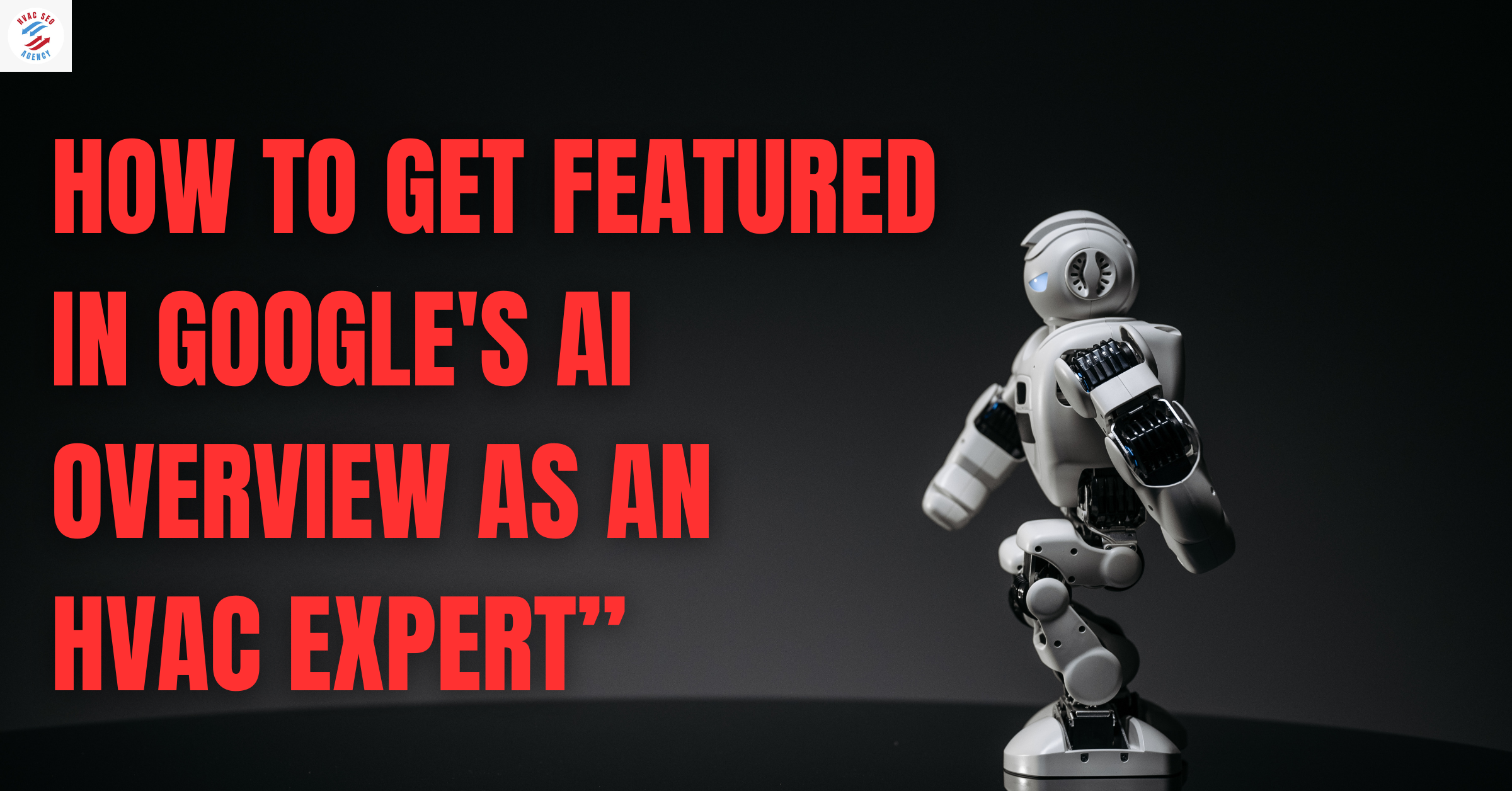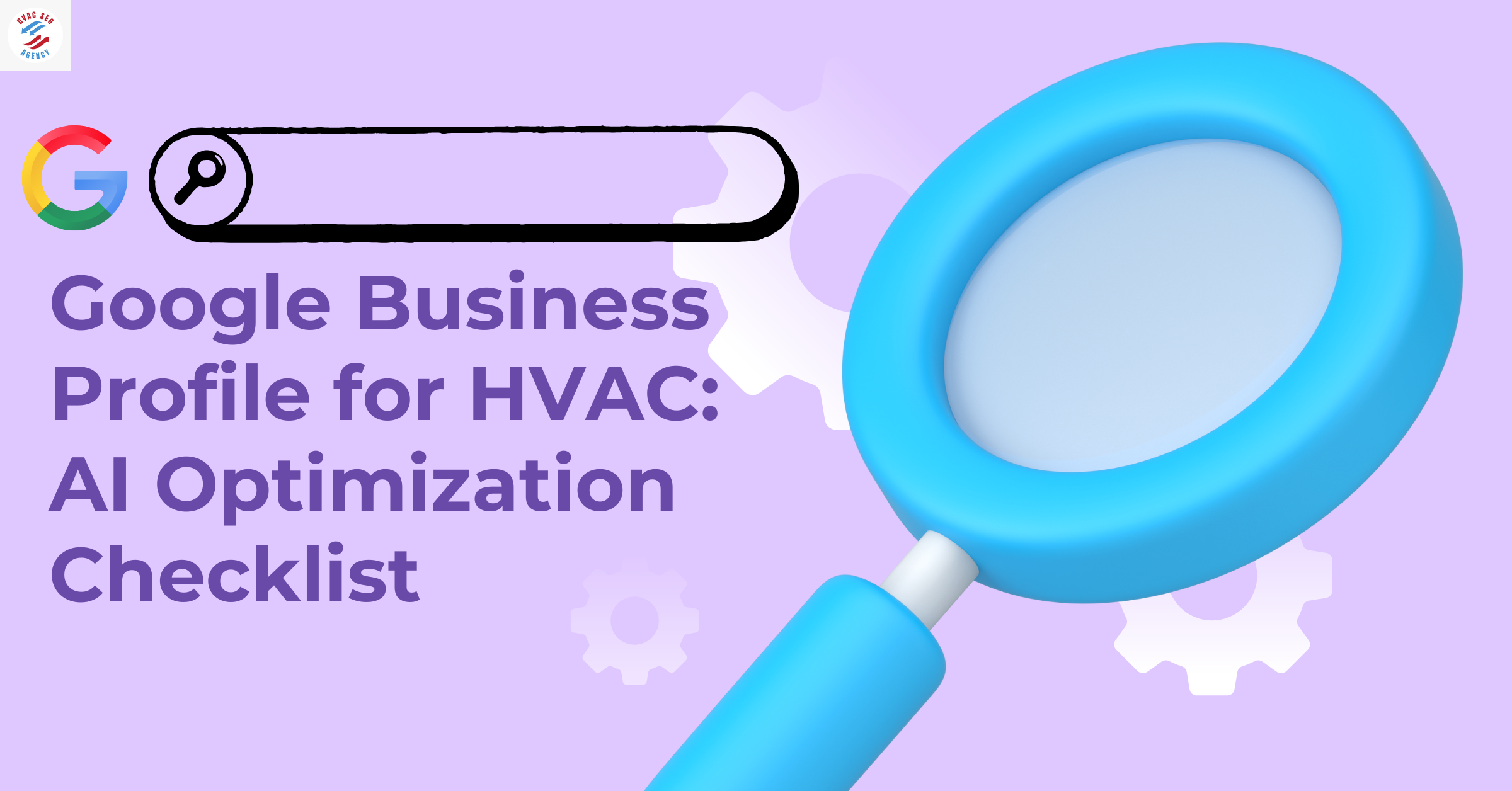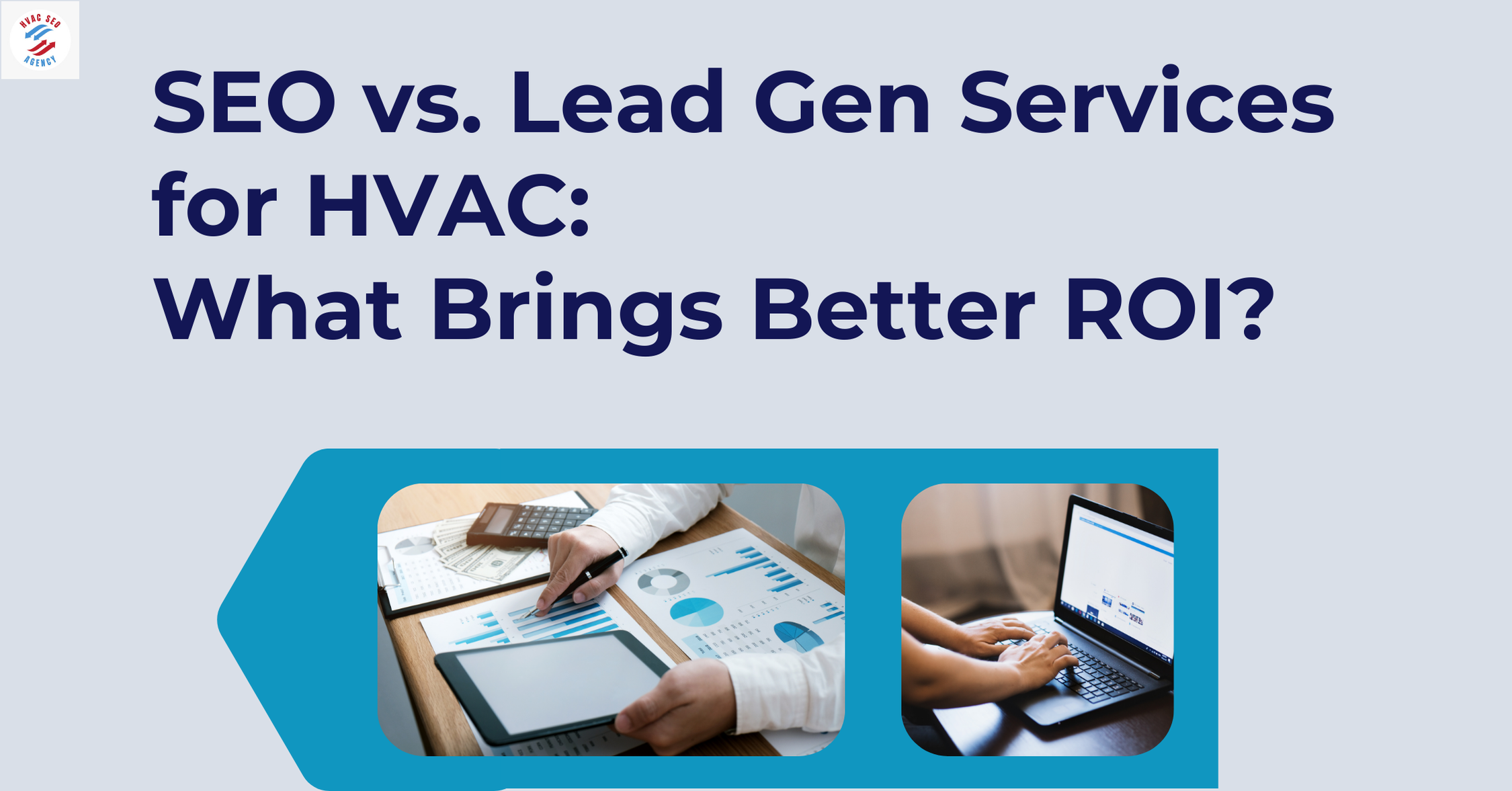Best Practices for Handling Difficult HVAC Customers

1. The HVAC Customer Landscape
Effectively managing HVAC customer conflict and addressing HVAC complaints requires a comprehensive understanding of the customer base. This includes knowing who your customers are, what they expect, and how they interact with your business. For example, understanding regional behavior and service demand is not just helpful for in-person service delivery it also directly influences Local SEO for HVAC Contractors. By aligning digital visibility with customer demographics and expectations, HVAC businesses can improve both customer satisfaction and online search performance. This section delves into the demographics of HVAC customers and their expectations, providing a foundation for effective service strategies and local SEO growth.
Demographics of HVAC Customers
The HVAC customer base in the United States is diverse, encompassing various age groups, income levels, and regional distributions.
Age and Income:
The majority of home services customers, including HVAC, fall into the age group of 35-54 years old, with a median annual income of $75,000.
Millennials, aged 25-34, represent 27% of the customer base for home services, prioritizing convenience and digital interactions.
Regional Distribution:
Urban areas account for 65% of the demand for home services, while suburban and rural areas make up the remaining 35%.
Air conditioning usage varies by region:
In the South, 93% of homes use air conditioning.
The Midwest follows closely with 92% usage.
Understanding these demographics is crucial for tailoring services and marketing strategies to meet the specific needs of different customer segments.
Common Customer Expectations
HVAC customers have distinct priorities when selecting and utilizing HVAC services:
System Reliability:
38% of consumers rank system reliability as their top priority when choosing an HVAC unit.
Energy Efficiency:
Energy efficiency is a significant concern, with 61% of new home buyers considering it among their top three decision factors.
Cost Considerations:
While cost is a factor, 83% of consumers prioritize factors other than cost when purchasing an HVAC system.
Preference for Domestic Products:
79% of U.S. consumers prefer HVAC systems made in the United States.
Aligning services with these expectations can enhance customer satisfaction and reduce the likelihood of HVAC customer conflict.
Table: Demographic Breakdown of HVAC Customers
By comprehensively understanding the HVAC customer landscape, businesses can better address HVAC complaints and mitigate HVAC customer conflict, leading to improved customer relationships and business success.
2. The Impact of Customer Complaints on HVAC Businesses
Addressing HVAC customer complaints effectively is crucial for maintaining a strong business reputation and ensuring customer retention. Unresolved issues can lead to significant financial losses and damage to the company's image.
Frequency and Nature of Complaints
Customer complaints in the HVAC industry often stem from:
Delays in Service: 55% of negative HVAC reviews are due to service delays.
Poor Communication: Misunderstandings about service terms or costs can lead to dissatisfaction.
Technical Issues: Recurring system malfunctions or improper installations are common grievances.
Consequences of Unresolved Complaints
Neglecting customer complaints can have severe repercussions:
Financial Losses: Businesses lose approximately $75 billion annually due to poor customer service.
Customer Attrition: 65% of customers have switched brands because of a poor experience.
Reputational Damage: Negative reviews and word-of-mouth can deter potential clients.
Effectively handling HVAC complaints is essential to mitigate these risks and foster long-term customer relationships.
Effectively managing HVAC complaints is essential for maintaining customer satisfaction and loyalty. Implementing structured approaches can significantly reduce HVAC customer conflict and enhance the overall service experience.
Prompt Acknowledgment
Timely responses to customer complaints are critical. Delays can exacerbate dissatisfaction and lead to negative reviews. Studies indicate that 55% of negative HVAC reviews stem from service delays. Establishing a protocol to acknowledge complaints swiftly demonstrates commitment to customer service and can prevent escalation.
Active Listening and Empathy
Understanding the customer's perspective is vital. Active listening involves fully concentrating, understanding, and responding thoughtfully. Empathetic communication can defuse tension and build trust. For instance, acknowledging the inconvenience caused and expressing genuine concern can make customers feel valued and heard.
Thorough Investigation
Conducting a detailed examination of the issue ensures accurate identification of the problem. This involves gathering all relevant information, inspecting the system if necessary, and consulting with technical teams. A comprehensive investigation prevents misdiagnosis and ensures that the proposed solution addresses the root cause.
Clear Communication of Solutions
Once the issue is identified, clearly explaining the proposed solution, associated costs, and expected timelines is crucial. Transparency in communication helps manage customer expectations and reduces misunderstandings. Providing written documentation of the solution plan can further enhance clarity.
Follow-Up and Feedback
After resolving the complaint, following up with the customer to ensure satisfaction demonstrates a commitment to service excellence. Soliciting feedback not only shows that the business values the customer's opinion but also provides insights into areas for improvement. Implementing changes based on feedback can lead to continuous service enhancement.
By adopting these best practices, HVAC businesses can effectively handle HVAC complaints, minimize HVAC customer conflict, and foster long-term customer relationships.
4. Training Staff for Effective Complaint Handling
In the HVAC industry, equipping staff with robust customer service skills is essential for effectively handling HVAC complaints and minimizing HVAC customer conflict. Comprehensive training programs and employee empowerment strategies are pivotal in achieving high customer satisfaction and fostering business growth.
Developing Customer Service Skills
Investing in customer service training enhances the ability of HVAC technicians to address customer concerns adeptly. Key components of such training include:
Communication Techniques: Emphasizing clear and empathetic communication helps in accurately understanding and resolving customer issues.
Problem-Solving Abilities: Training technicians to assess situations effectively and propose appropriate solutions enhances service quality.
Professionalism: Encouraging punctuality, respectful interactions, and maintaining a professional demeanor builds customer trust.
According to the U.S. Bureau of Labor Statistics, customer-service skills are crucial for HVAC technicians, as they often work in customers' homes or business offices and must be friendly, polite, and punctual.
Empowering Employees
Empowering HVAC technicians to make informed decisions during service calls can lead to more efficient complaint resolution and increased customer satisfaction. Empowerment strategies include:
Decision-Making Authority: Allowing technicians to make certain on-the-spot decisions can expedite service and demonstrate responsiveness.
Access to Resources: Providing the necessary tools and information enables technicians to address issues effectively.
Recognition and Rewards: Acknowledging and rewarding effective complaint handling motivates employees to maintain high service standards.
Studies have shown that employee empowerment positively correlates with customer satisfaction and sales performance.
By focusing on comprehensive training and empowering staff, HVAC businesses can enhance their service quality, effectively handle HVAC complaints, and reduce HVAC customer conflict, leading to improved customer loyalty and business success.
In the HVAC industry, effectively handling customer complaints is vital for maintaining satisfaction and loyalty. Utilizing technological solutions, such as Customer Relationship Management (CRM) systems and online communication channels, can significantly enhance complaint management processes.
Customer Relationship Management (CRM) Systems
Implementing a CRM system offers numerous benefits for HVAC businesses:
Centralized Customer Information: CRM software consolidates customer data, including contact details, service history, and communication logs, into a single platform. This centralization facilitates efficient access and management of customer information.
Improved Customer Retention: Companies that implement CRM systems experience a 47% growth in both customer retention and satisfaction.
Enhanced Communication: CRM systems enable personalized interactions by recording each customer’s preferences, past conversations, and purchase history, leading to improved customer service.
Optimized Scheduling and Dispatch: Advanced CRM solutions offer scheduling tools that allow dispatching the nearest available technician using GPS tracking, reducing response times and improving efficiency.
Real-Time Mobile Access: Technicians can access job details, customer information, and schedules on-the-go, enabling timely updates and efficient service delivery.
Online Communication Channels
Leveraging various online platforms enhances customer support and complaint resolution:
Phone Calls: Despite the rise of digital communication, 34% of home service customers prefer phone calls as their primary method of communication with service providers.
Live Chat Support: Offering live chat support can be beneficial, as 77% of customers say they won't make a purchase if a brand doesn't offer this feature.
Social Media Engagement: Active presence on social media platforms allows businesses to address complaints promptly and publicly, demonstrating commitment to customer service.
Graph: Preferred Communication Channels for Home Service Customers
By integrating CRM systems and utilizing various online communication channels, HVAC businesses can streamline complaint management processes, leading to improved customer satisfaction and loyalty.
6. Preventing HVAC Customer Conflict
Proactively addressing potential issues in HVAC services is essential to prevent customer conflicts and enhance satisfaction. Implementing strategies such as setting clear expectations and offering regular maintenance can significantly reduce misunderstandings and service-related disputes.\
Setting Clear Expectations
Transparent communication about services, costs, and procedures is fundamental in managing customer expectations:
Detailed Service Agreements: Providing comprehensive contracts that outline the scope of work, associated costs, and timelines helps prevent misunderstandings. Clear documentation ensures both parties are aware of their responsibilities and deliverables.
Upfront Pricing: Clearly communicating pricing structures before commencing work allows customers to make informed decisions and reduces the likelihood of disputes over costs.
Realistic Timelines: Setting achievable deadlines and keeping customers informed about potential delays fosters trust and demonstrates reliability. For instance, informing customers about the estimated duration of service visits and any factors that might affect scheduling can help manage their expectations effectively.
Regular Maintenance and Communication
Implementing proactive maintenance programs and maintaining open lines of communication are key to preventing system failures and associated conflicts:
Preventive Maintenance Plans: Offering scheduled maintenance services ensures HVAC systems operate efficiently and helps identify potential issues before they escalate. According to industry insights, only 30% of Americans schedule preventive maintenance for their HVAC systems, indicating a significant opportunity for businesses to promote these services and enhance customer satisfaction.
Educational Initiatives: Educating customers on the benefits of regular maintenance and proper system usage can lead to better system performance and longevity. For example, informing customers that regular filter changes can reduce monthly heating and cooling bills by 5-15% emphasizes the tangible benefits of maintenance.
Consistent Follow-Ups: Regular check-ins with customers post-service can identify any emerging issues and reinforce the company's commitment to customer care. This ongoing engagement helps in building long-term relationships and promptly addressing concerns before they escalate.
Graph: Impact of Preventive Maintenance on System Breakdowns
By setting clear expectations and emphasizing regular maintenance, HVAC businesses can significantly reduce customer conflicts, enhance service reliability, and build lasting customer relationships.
7. The Role of HVAC SEO Agencies in Business Growth
In today's digital landscape, establishing a robust online presence is imperative for HVAC businesses aiming to enhance visibility, attract quality leads, and boost revenue. Partnering with a specialized HVAC SEO agency can provide the expertise and strategies necessary to achieve these objectives.
Enhancing Online Visibility
An HVAC SEO agency employs targeted strategies to improve a company's search engine rankings, ensuring that when potential customers search for HVAC services, the business appears prominently in search results. This increased visibility is crucial, as studies indicate that the top three search results receive the majority of clicks.
Generating Quality Leads
By optimizing website content with relevant keywords and ensuring the site is user-friendly, HVAC SEO agencies attract high-intent visitors. This means that the traffic driven to the website consists of individuals actively seeking HVAC services, thereby increasing the likelihood of conversion. For instance, implementing local SEO tactics can connect businesses with homeowners in their service area precisely when they need assistance.
Increasing Revenue
Effective SEO strategies have a direct impact on a company's bottom line. For example, a case study revealed that an HVAC and plumbing company generated $2.5 million in revenue within eight months by implementing a comprehensive SEO campaign. Another HVAC business experienced an 80% revenue growth, necessitating the hiring of additional technicians and installers to meet the increased demand.
Table: Impact of SEO on HVAC Business Growth
By collaborating with an HVAC SEO agency, businesses can effectively enhance their online presence, attract quality leads, and achieve substantial revenue growth, positioning themselves competitively in the market.
Effectively managing HVAC customer complaints is crucial for maintaining customer satisfaction and loyalty. The following case studies illustrate how HVAC businesses have successfully addressed and resolved customer issues, leading to improved service quality and client relationships. These examples also underscore how visibility improvements such as Google My Business Optimization for HVAC in Dallas can support both offline service excellence and online reputation management. By resolving issues efficiently and showcasing success through optimized local profiles, HVAC companies not only retain customers but also attract new ones who value transparency and reliability
Case Study 1: Sullivan County Courthouse
Background:
The Sullivan County Courthouse faced numerous comfort complaints due to an outdated chiller system and poor building envelope conditions. These issues resulted in an uncomfortable indoor environment and increased energy costs.
Actions Taken:
Chiller Upgrade: Replaced the old chiller with a modern, energy-efficient model to enhance cooling performance.
Building Envelope Improvements: Implemented solutions to address insulation and sealing issues, reducing energy loss and improving indoor comfort.
Outcome:
The combined upgrades led to a more than 90% reduction in comfort complaints and annual energy savings exceeding $45,000. This case exemplifies how targeted system improvements can resolve customer complaints and yield significant cost savings.
Case Study 2: Cooling and Heating Repair
Background:
A residential client experienced inconsistent indoor temperatures and high energy bills, leading to dissatisfaction with their HVAC system's performance.
Actions Taken:
Comprehensive System Assessment: Conducted a thorough evaluation of the existing HVAC system to identify inefficiencies and malfunctions.
System Revitalization: Performed necessary repairs and adjustments to optimize system functionality and efficiency.
Client Education: Provided the client with guidance on regular maintenance practices to sustain system performance.
Outcome:
Post-service, the client reported enhanced indoor comfort and reduced energy expenses. This case highlights the importance of thorough diagnostics and client education in resolving HVAC complaints.
Case Study 3: American Air Systems
Background:
American Air Systems aimed to enhance their customer service quality and operational efficiency to address and prevent customer complaints effectively.
Actions Taken:
Quality and Innovation Focus: Emphasized delivering high-quality HVAC solutions and adopting innovative technologies to meet customer needs.
Customer-Centric Approach: Prioritized customer satisfaction by actively seeking feedback and tailoring services accordingly.
Outcome:
The company's dedication to quality and customer service excellence was recognized with the 2025 Carrier President's Award, marking the fourth time they received this honor. This accolade reflects their success in minimizing customer complaints through proactive service enhancements.
These case studies demonstrate that proactive system assessments, targeted upgrades, and a strong commitment to customer-centric practices are effective strategies for resolving HVAC customer complaints and enhancing overall service quality.
9. Strategies for Long-Term Customer Satisfaction and Loyalty
Ensuring long-term customer satisfaction and loyalty is pivotal for the sustained success of HVAC businesses. Implementing effective strategies can lead to increased customer retention, enhanced reputation, and improved profitability.
Implementing Customer Feedback Systems
Actively seeking and utilizing customer feedback allows HVAC businesses to identify areas for improvement and demonstrate a commitment to client satisfaction. Establishing structured feedback mechanisms, such as surveys and follow-up calls, enables companies to address concerns promptly and tailor services to meet customer expectations.
Offering Loyalty Programs and Maintenance Contracts
Developing loyalty programs and offering maintenance contracts can incentivize repeat business and foster long-term relationships. For instance, providing regular maintenance services through membership agreements ensures consistent system performance and customer engagement. These contracts not only enhance customer satisfaction but also contribute to steady revenue streams.
Personalized Customer Interactions
Personalizing interactions by remembering customer preferences and service histories can significantly enhance the customer experience. Utilizing Customer Relationship Management (CRM) systems to track and manage customer information allows HVAC businesses to tailor their communications and services, thereby strengthening client relationships.
Proactive Communication and Education
Keeping customers informed about system maintenance schedules, potential upgrades, and energy-saving tips positions the HVAC company as a trusted advisor. Educational initiatives that empower customers to make informed decisions about their HVAC systems can lead to increased trust and loyalty.
Ensuring High-Quality Service Delivery
Consistently delivering high-quality service is fundamental to customer satisfaction. This includes timely responses to service requests, employing skilled technicians, and using quality parts and equipment. A focus on excellence in service delivery can lead to positive word-of-mouth referrals and a strong market reputation.
By implementing these strategies, HVAC businesses can enhance customer satisfaction, foster loyalty, and achieve long-term success in a competitive market.
The HVAC industry is poised for significant transformations in customer service, driven by technological advancements and evolving consumer expectations. Staying ahead of these trends is crucial for businesses aiming to maintain a competitive edge and enhance customer satisfaction.
Integration of Smart Technologies
The adoption of smart HVAC systems is on the rise, with the global smart thermostat market projected to grow from $1.2 billion in 2022 to $3.8 billion by 2029. These systems offer remote monitoring and control, enabling proactive maintenance and personalized customer experiences. For instance, HVAC companies can receive real-time alerts about system issues, allowing them to address problems before they escalate, thereby reducing customer complaints.
Emphasis on Energy Efficiency and Sustainability
Consumers are increasingly prioritizing energy-efficient and environmentally friendly HVAC solutions. The U.S. HVAC market is expected to be worth $35.8 billion by 2030, reflecting a growing demand for sustainable systems. HVAC businesses can enhance customer satisfaction by offering eco-friendly options and educating clients on energy-saving practices.
Enhanced Digital Communication Channels
The majority of home services shoppers start their journey by finding and comparing providers online. This trend underscores the importance of robust digital communication strategies. Implementing features like live chat support, user-friendly websites, and active social media engagement can improve customer interactions and streamline the complaint resolution process.
Personalization through Data Analytics
Utilizing data analytics allows HVAC companies to personalize services based on customer preferences and behavior. By analyzing data from smart systems and customer interactions, businesses can offer tailored maintenance plans, anticipate service needs, and provide targeted recommendations, thereby enhancing customer loyalty and reducing conflicts.
Proactive Customer Engagement
Proactive engagement strategies, such as regular follow-ups and maintenance reminders, can significantly improve customer satisfaction. With repeat customers driving 58% of work and 39% of revenue in 2022, focusing on customer retention may offer the best return on investment. By anticipating customer needs and addressing them proactively, HVAC businesses can foster trust and long-term relationships.
By embracing these emerging trends, HVAC companies can enhance their customer service strategies, effectively handle HVAC complaints, and minimize HVAC customer conflict, positioning themselves for sustained success in a dynamic market.
Frequently Asked Questions (FAQs)
1. What is the best way to handle HVAC complaints quickly
The best approach is to acknowledge the complaint immediately, listen actively to the customer, and provide a clear solution. Using CRM systems helps track and manage complaints efficiently. Follow-up is essential to ensure the issue is resolved to the customer’s satisfaction.
2. How can HVAC companies reduce HVAC customer conflict
Conflict can be reduced by setting clear expectations with detailed service agreements, providing upfront pricing, and maintaining transparent communication. Offering preventive maintenance programs also helps avoid unexpected issues.
3. Why is customer feedback important in the HVAC industry
Customer feedback reveals service gaps and improvement areas. It helps HVAC businesses enhance their operations and service quality. Responding to feedback also shows that the business values its customers.
4. How does hiring an HVAC SEO agency help with customer complaints
An HVAC SEO agency improves online visibility and helps attract better-quality leads. By targeting the right audience, businesses are more likely to serve informed and relevant customers, reducing the number of misunderstandings and complaints.
5. What role does training play in handling HVAC customer complaints
Training improves communication, empathy, and problem-solving skills among technicians and staff. This enables employees to respond more professionally to customer concerns and resolve issues effectively on the first visit.
6. Can technology really help in managing HVAC customer complaints
Yes. CRM systems, mobile apps, live chat support, and automated maintenance reminders streamline service delivery and communication, making it easier to respond to and track complaints.
7. What should be included in an HVAC service agreement to prevent conflicts
It should include the scope of work, service duration, pricing, warranty terms, maintenance schedules, and a clear point of contact. This clarity minimizes the chance of disputes.
8. How does preventive maintenance impact customer satisfaction
Preventive maintenance ensures system reliability and reduces unexpected failures. Customers experience fewer issues, and businesses receive fewer complaints. It builds long-term trust and satisfaction.
Conclusion
Handling HVAC complaints effectively and reducing HVAC customer conflict is no longer optional for HVAC businesses that aim to grow in a competitive market. With the help of prompt responses, structured complaint resolution processes, trained staff, transparent communication, and modern CRM tools, companies can create a seamless experience that retains loyal customers. Moreover, integrating a trusted HVAC SEO agency into the growth strategy helps attract high-intent leads, boosting both revenue and reputation. The combination of service excellence, proactive maintenance, customer education, and smart technology will shape the future of HVAC customer service in the United States. Businesses that invest in these areas now will dominate the market tomorrow.






